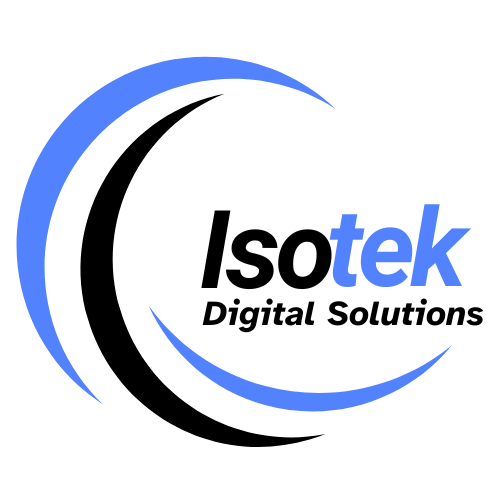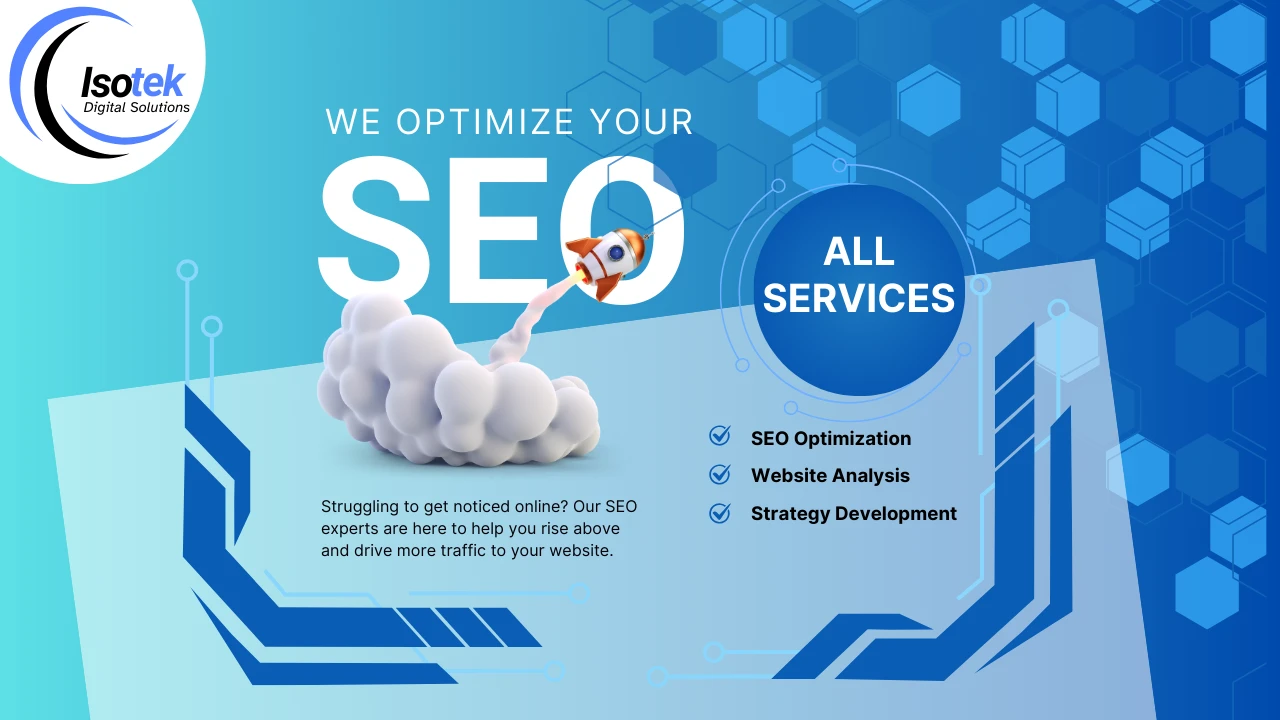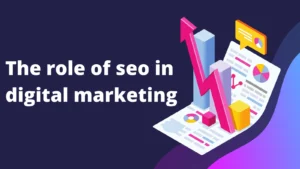In this blog, we will know about what is SEO in digital marketing, how it works, and why it’s essential for growing your online presence. Whether you’re a business owner or a marketing professional, learn how optimizing your website can drive organic traffic, improve search engine rankings, and build lasting visibility. Isotek Digital Solutions, we are leading with helping you harness the power of SEO to achieve sustainable digital success.
What is SEO in Digital Marketing
SEO, or Search Engine Optimization, is a core component of digital marketing focused on improving a website’s visibility in search engine results pages (SERPs), like those on Google or Bing. The goal of SEO is to drive organic (non-paid) traffic to a website by making it more attractive to search engines and relevant to users’ search queries.
Discover the fundamentals of SEO (Search Engine Optimization) and its vital role in digital marketing with Isotek Digital Solutions. In today’s highly competitive digital landscape, simply having a website isn’t enough — your audience needs to find you. That’s where SEO, or Search Engine Optimization, comes in.
Also Read Us: Best Digital Marketing Agency Near Me
Types of SEO in digital marketing
SEO in digital marketing broadly falls into three main categories:
1:On-page SEO
2:Off-page SEO
3:Technical SEO
These categories encompass various techniques and strategies aimed at improving a website’s visibility in search engine results
On-page SEO:
On-page SEO optimizing the content and structure of a website itself to improve its ranking in search engine results.
Off-page SEO:
Off-page SEO building external credibility and authority for a website through activities outside the website itself.
Technical SEO:
Technical SEO optimizing the technical aspects of a website to ensure it can be easily crawled, indexed, and understood by search engines.
Difference between On-page, Off-page, and Technical SEO:
Here’s a clear comparison table showing the differences between On-Page SEO, Off-Page SEO, and Technical SEO:
| Aspect | On-Page SEO | Off-Page SEO | Technical SEO |
| Definition | Optimization done within the website | Optimization done outside the website | Backend and infrastructure optimization for search engines |
| Focus Area | Content quality and keyword relevance | Building authority and trust through external signals | Site performance, indexing, and crawlability |
| Key Activities | – Keyword optimization- Meta tags- Internal linking- Image ALT tags- Headings and content | – Backlink building- Social media marketing- Influencer outreach- Online reputation | – Site speed- Mobile-friendliness- XML sitemaps- HTTPS security |
| Goal | Improve content relevance and user engagement | Increase site authority and trustworthiness | Help search engines crawl, index, and rank the site efficiently |
| Controlled By | Website owner or content manager | External sites and audience interactions | Developers or SEO specialists with access to site architecture |
| Tools Used | Yoast SEO, Rank Math, Google Search Console | Ahrefs, Semrush, Moz, BuzzSumo | Google Search Console, Screaming Frog, GTmetrix, PageSpeed Insights |
| Importance | High – Directly affects what search engines and users see | High – Influences site credibility and ranking potential | Critical – Enables search engines to effectively access content |
Why it’s essential for growing your online presence:
1. Increases Visibility in Search Engines
2. Drives Targeted (Organic) Traffic
3. Builds Credibility and Trust
4. Improves User Experience
5. Offers Long-Term Results
6. Cost-Effective Marketing
7. Supports All Stages of the Buyer Journey
How SEO Works:
1. Crawling
2. Indexing
3. Ranking
4. Serving Results
Key Elements of SEO:
- On-Page SEO – Optimizing content and HTML source code:
- Keyword research and usage
- Title tags and meta descriptions
- Header tags (H1, H2, etc.)
- Internal linking
- Mobile responsiveness and page speed
- Keyword research and usage
- Off-Page SEO – Building authority and trust:
- Backlinks from other websites
- Social signals (mentions on social media)
- Online reviews and brand mentions
- Backlinks from other websites
- Technical SEO – Ensuring search engines can crawl and index a site:
- Sitemap and robots.txt
- Website architecture
- Secure connections (HTTPS)
- Fixing crawl errors and broken links
- Sitemap and robots.txt
- Content SEO – Creating valuable, relevant, and consistent content:
- Blog posts
- Landing pages
- FAQs and guides
- Blog posts
Conclusion
In a world where customers start their journey online, SEO is your digital storefront. It brings visibility, trust, and traffic — all without paying for ads. If you’re ready to take control of your online growth, Isotek Digital Solutions has the tools, expertise, and passion to help you rank higher and grow faster. Let’s start optimizing your success today.




